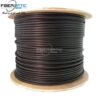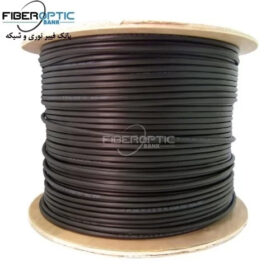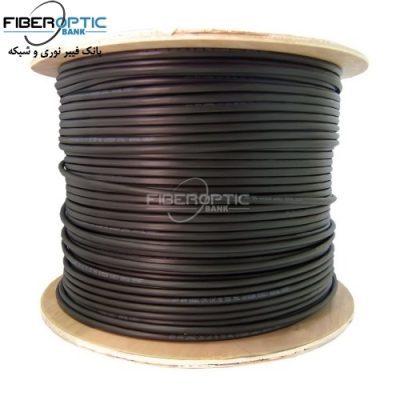ADSS single mode 24 core optical fiber cable
This post covers the design and performance standards for single-mode fiber self-supporting all-dielectric (ADSS) cable (G652 D). In the following, the optical, structural and mechanical properties of ADSS single mode 24-core optical fiber cable have been discussed. All properties are fully compliant with the latest revision of TCI specifications.
ADSS single mode 24 core optical fiber cable
This single-mode fiber optic cable is an all-dielectric aerial cable that can be used in aerial optical networks, made with single-mode fiber according to ITU/TIA G652D. This cable is resistant to ultraviolet rays due to the use of black high-density polyethylene (HDPE). This cable is suitable for use in central resistive element applications and can be used with 2 to 144 optical fiber cores.
Features of PBN brand ADSS fiber optic cable
Waterproof
UV resistant
Armored corrugated steel strip
Complete protection against rodents
Direct burial
Has two jackets
Non-zero dispersion – shifted
Fiber optic facilities
Fiber attenuation at 1310 nm: ≤ 0.34 dB/Km
Fiber attenuation at 1550 nm: ≤ 0.22 dB/km
Fiber attenuation at 1625 nm: ≤ 0.24 dB/km
Influence from the environment: ≤ 72 µm
Mode field diameter (MFD) at 1310 nm: 9.2 ± 0.4 um
Mode Field Diameter (MFD) at 1550 nm: 10.4 ± 0.8 um
Cable cutoff (λcc): ≤ 1260 nm
PMD @ 1550 nm: ≤ 0.2 ??/√?m
Physical characteristics of microcable
Cable diameter: Typ 9 µm
Non-circular core: ≤ 6%
Core coating deviation: ≤ 0.5 µm
Coating diameter: 125 ±0.7 µm
Non-circular coverage: ≤ 7%
Cover diameter: 245 ± 5 µm
Cable structure
Optical fiber
Waterproof thixotropic jelly
Central resistive element
loose tube
filler (if any)
Relaxed thread
Outer jacket
Central resistance member
Fiber reinforced polymer (FRP) with a diameter of 2.5 μm is used as a central resistive element. Young’s modulus of FRP is 50,000 N/mm2 and water absorption is 0.1% maximum.
loose tube
Love tubes are made of polybutene terephthalate (PBT) with a minimum thickness of 0.4 mm. The fibers are spirally placed in the loose tube to have the ability to expand and contract the fibers. In order to prevent water penetration, loose tubes are filled with thixotropic gel.
Cable core
Loose tubes and their fillers (if any) are located on the central resistive element. Fillers are polyethylene rods that are used to round the cable core when needed. It has a water-swollen thread wound around the central resistive element for waterproofing purposes. At the end, a binder thread is spirally wrapped around them to keep the core flat.
Swollen bar
To make the cable waterproof, the core is wrapped in inflatable tape. Inflating tape is also composed of corrosion inhibitors.
outer jacket
Black HDPE (High Density Polyethylene) according to ASTM-1248 covers the entire cable as a 2 mm thick outer jacket.
Ripcord
Under the outer jacket, two Ripcords are placed to assist the operator in removing the jacket.



















Reviews
There are no reviews yet.